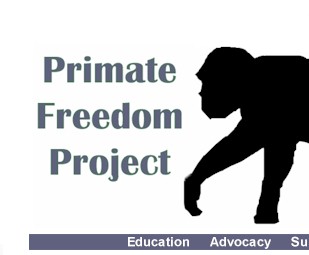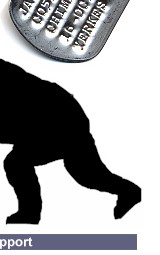






|
||||||||||||||||||||||||||||||||||||||||||||||||||||||||||||||||||||||||||||||||||||||||||||||||||||||||||||||||||||||||||||||||||||||||||||||||||||||||||||||||||||||||||||||||||||||||||||||||||||||||||||||||||||||||||||||||||||||||||||||||||||||||||||||||||||||||||||||||||||||||||||||||||||||||||||||||||||||||||||||||||||||||||||||||||||||||||||||||||||||||||
The Rewards of Repetitive Cruelty: A look at Stuart Zola-Morgan, the director of the Yerkes Regional Primate Research Center, and the implied public message in his appointment. Rick
Bogle
Yerkes
may be the best known and perhaps the most prestigious primate-based
research facility in the nation. The decisions made concerning Yerkes’
choice of research and directorship is closely watched by the National
Institutes of Health (NIH) and the rest of the vivisecting community.
The person chosen for the position probably has the approval of
the senior NIH staff. The choice of director may be viewed as a
statement by the NIH regarding what research methods are desirable.
The director’s own research will be seen as an example of high
caliber research
and will set the tone as he assumes the role of spokesperson for
this flagship facility. Of interest is the fact that the previous
director, Tom Insel, lost his position after being caught in less
than factual statements on national television as he tried to discredit
a child who had an encounter with an escaped monkey on her front
porch. This public relations blunder, coupled with the cover-up
surrounding the death a young lab worker at the facility, was too
large an embarrassment for Yerkes and NIH. Insel was “reassigned.”
Zola-Morgan’s initial premise is illogical. Though damaging an area of the brain associated with memory may result in amnesia, it is illogical to assume that any amnesia arising from any brain injury is an indication that the area damaged is involved in a direct way with the phenomena of memory. Consider a much simpler system: an automobile. Someone seeking to understand how an automobile works could, following Zola-Morgan’s methods, destroy various components of a car, the key for instance, and make various inferences. A naïve observer might come to the conclusion that the key is a critical component. Deep and careful study of the key itself would offer little insight into the mechanics of internal combustion engines or modern transmissions. The same observer might come to the conclusion that the seatbelt interlock is important for the car to function when in actuality, the seatbelt, the key, the gear shift lever, the parking brake, and other peripheral devices are only marginally associated with the basic functions of an automobile. Further, even if one did determine that destroying the spark plugs, for instance, interfered with the operation of the engine, one would have little understanding of what the spark plugs do, or of course, how to repair them once they were destroyed. In fact, Zola-Morgan has acknowledged as much. The degree of memory loss in humans due to brain injury is directly related to the size as much as the location of the injury. In other words, if you have a small injury you don’t lose as much memory as you would if you had a larger injury. This suggests that memory may be a widely dispersed dynamic phenomena rather than a storing of experiences in discrete neural compartments. Zola-Morgan says:
Most troubling is the fact that Zola-Morgan is not destroying various parts of a car; he is methodically destroying parts of living monkeys’ brains. To fully understand the unsettling nature of Zola-Morgan’s experiments, it is necessary to first understand who his victims are. Monkeys have been increasingly understood to possess complex minds and emotions. Monkeys are used in experiments specifically because they are capable of abstract thought3, display emotion4, exhibit altruism5, and maintain highly complex social relationships6. These well-known characteristics should compel a basic ethical and moral reconsideration of the experimental manipulations of these beings, but the contrary is true among the primate experimentation community. The close similarities of the most fundamental aspects of human-ness and monkey-ness – mind and emotion – have been magnets for exploitation by those without moral rudders; Zola-Morgan is an exemplar of this phenomena. Early in Zola-Morgan’s career he began destroying parts of monkeys’ brains and pointing out that the resultant impairments were similar to impairments seen in humans with similar brain damage. In 1981, he wrote:
From this passage it is clear that Zola-Morgan’s methods are less than precise. He says, “ablations of hippocampus included inadvertent damage of the inferotemporal cortex.” Indeed, this messiness and imprecision suggest that his results are suspect. In 1991, Zola-Morgan as much as admitted that variation between individual monkey’s brain physiology makes precision in locating brain structures problematic. He wrote:
Yerkes and the rest of the NIH Regional Primate Research Center system make the claim that they are sacrificing monkeys for the sake of human health. Yerkes explains its mission:
So it must be assumed that Yerkes and NIH see Zola-Morgan’s research as fitting neatly into, perhaps exemplifying, this goal. Is Zola-Morgan’s research actually relevant to human health? Of course he says it is when he makes the claim: “Our work is relevant to issues of how memory is organized in the brain and to issues of memory impairment associated with a wide range of human conditions, e.g., aging, Alzheimer's disease, and stroke.”10 But this claim requires substantiation. Zola-Morgan has investigated the loss of tactile amnesia in monkeys whose brains he has injured. Tactile memory or amnesia refers to the recollection (or loss of ability to recollect) of the physical feel of an object. In other words, when you feel a coin in your pocket do you remember that it is a coin? Is this question relevant to human health? NIH maintains an online database of medical journals:
This database is used by researchers as they seek to ascertain whether their work is redundant and as a source for scientific information. A search for “cancer” results in a list of 1,355,509 citations. This is unsurprising due to the prevalence of the malady and the research effort associated with it. Likewise, “arteriosclerosis” results in over 56,000 citations and “stroke” over 65,000 citations. On the other hand, “amnesia” results in 6,999 (as of July 30, 2001) and “tactile AND amnesia” results in 17 citations. Of these seventeen citations, seven refer to the temporary and often desirable amnesia associated with anesthesia and sedatives. Of the remaining ten, one is a paper published in 1970, and six others published in the years 1979, 1980, 1982, 1983, 1984, and 1990. A study of rats with experimental brain damage induced tactile amnesia was published in 1991, and single papers in 1993 and 2000. It must be inferred that the study of tactile amnesia is of little interest in the medical community, not perhaps out of a lack of compassion, but more likely due to the rarity of the condition. Undoubtedly, there must be a few doctors and researchers with an interest in the topic, but its relevance as compared with the major human ailments must be considered to be very low. It is precisely this inconsequential and logically flawed research that NIH and Yerkes have chosen to highlight by choosing Zola-Morgan to head the most visible of all the nation’s primate laboratories. To gain a better understanding of what it is that Zola-Morgan does in his laboratory one need only consult his published work.12 Excerpts follow:
Prior to the brain surgeries, the monkeys had been trained to reach over a visual barrier and feel an object. If it was the correct object, and they tugged on it thee times, they received a food reward (a raisin). The monkeys learned which objects when tugged on resulted in a food reward. After their brains were damaged, they were again tested.
One way to judge the value of a researcher’s work is to look at the number of times it has been referred to in subsequent research by other scientists. If a scientist publishes a paper and no one pays attention, it can mean that others deem the work unimportant. In animal-based studies, it is the norm for researchers to claim that the work they are engaged in will have value for human health at some later date. The paper excerpted above was published at the end of 1999, or a year and a half ago at the time of this writing. To date, according to the journal’s publishers, the paper has been cited in ten subsequent papers.14 Two of those papers are Zola-Morgan citing his own work. Two of the papers have to do with experiments on rats, and five of the papers are by other monkey users. Only one is from a human study, and this is a German clinical study on brain plasticity related to language after cochlear implants. But perhaps a year and a half is simply too short a time for clinical researchers to have taken note of Zola-Morgan’s work. Another paper15 published over ten years ago has been cited much more frequently. The publisher reports that the paper has been cited forty-one times. Of these: three are Zola-Morgan citing his own work; one is a Guinea pig-based study; two are experiments using cats; ten are rat-based studies; fifteen are by other researchers destroying monkeys’ brains; one is based on an unnamed species; one is a general article rather than a research report; and seven are human related. Of these seven human related studies, one16 is coauthored by one of Zola-Morgan’s own regular co-authors, David Amaral, himself a monkey brain experimenter at the California RPRC in Davis. The rest cite Zola-Morgan when noting that the parahippocampus may be involved in memory. But none of the clinical papers seem to actually build on Zola-Morgan’s work. It would be unreasonable to claim that Zola-Morgan’s work has in any way been trail blazing or otherwise exemplary. Zola-Morgan has, however, blazed a trail to the bank. He explains why he should keep being paid from the public trough:
Over the past decade Zola-Morgan has received nearly $2 million in taxpayer funding: 1992 - $48,203; 1993 - $158,227; 1994 - $156,011; 1995 - $162,657; 1996 - $169,303; 1997 – none listed; 1998 - $306,105; 1999 - $315,128; 2000 - $324,580; 2001 - $334,321.18 The second reason that Zola-Morgan is likely to have been selected to head Yerkes is his strong and outspoken opposition to the critics of vivisection. On Thursday, May 14, 1998, Zola-Morgan testified before the U.S. House of Representatives’ Committee on Science’s National Science Policy Hearing. His talk was titled: Communicating Science and Engineering in a Sound-Bite World. His speech was couched in reasonable terms and he assured the Committee members that his research was helping find answers to Alzheimer's Disease (AD), encephalitis, head trauma, chronic stress and the memory problems associated with aging. He went on to claim that the reason the public was increasingly critical of using animals in research was due to their “scientific illiteracy.” He testified:
And such legislation would impact on Zola-Morgan’s freedom to scramble monkeys’ brains. He continued:
UCSD ranked sixteenth in terms of grant funding in Fiscal 200018. Johns Hopkins was number one with NIH grants totaling over four hundred million dollars. UCSD received one hundred ninety million dollars. In terms of the “humane treatment of animals” facilities are not ranked. This claim was simple posturing before the Congressional Committee. In addition, Zola-Morgan’s position as chair of the Animal Subjects Committee gave him great power to deflect any internal criticism of his own work, and when the committee chair is involved in such blatantly pointless and cruel experiments, it tends to open the door for others who might otherwise be under greater constraints.
And this is likely at the core of Emory University’s and the NIH’s decision to see Zola-Morgan assume the leadership there. Local anti-cruelty activists have been recently successful in having legislators ask pointed questions of the facility. The need to deflect the likely outcome of acknowledging that you have been wasting millions of dollars and thousands of lives has motivated them to seek out someone with a good track record of pubic relations. And clearly, if Zola-Morgan can spin his own experiments in ways that will mollify lawmakers, Yerkes might assume that he might be able to shield them as well. But it seems that the Yerkes administration and NIH have failed to do their homework. An anti-cruelty activist from the San Diego area recalls:
The effects of Zola-Morgan’s appointment remain to be seen. What does seem clear is that the vivisecting community has escalated their defense of experimenting on animals. The battle is joined, and now we must all decide whether we stand on the side of kindness and compassion, or with the Zola-Morgans who claim the unfettered right to appease any and every curiosity. Note: A few years ago Zola-Morgan dropped the -Morgan from his name. He now goes by Stuart M. Zola. 1 From Zola-Morgan's profile at the University of California San Diego homepage: [http://medicine.ucsd.edu/neurosci/the-faculty/zola.html] 2 Zola-Morgan S, Squire LR, Ramus SJ. 1994. Severity of memory impairment in monkeys as a function of locus and extent of damage within the medial temporal lobe memory system. Hippocampus. Aug;4(4):483-95. Comment in: Hippocampus. 1995;5(3):232-9. 3 Wallis J, Anderson K, Miller E. 2001. Single Neurons in prefrontal cortex encode abstract rules. Nature: 953-956. 4 Barbas H. 2000.Connections underlying the synthesis of cognition, memory, and emotion in primate prefrontal cortices. Brain Res Bull. Jul 15;52(5):319-30. 5 Masserman J, Wechkin S, and Terris W. 1964. 'Altruistic' behavior in rhesus monkeys. American Journal of Psychiatry vol. 121. pp. 584-585.] 6 Bachevalier J, Alvarado MC, Malkova L. 1999. Memory and socioemotional behavior in monkeys after hippocampal damage incurred in infancy or in adulthood. Biol Psychiatry. Aug 1;46(3):329-39. 7 Moss M, Mahut H, Zola-Morgan S. 1981. Concurrent discrimination learning of monkeys after hippocampal, entorhinal, or fornix lesions. J Neurosci: Mar;1(3):227-40. 8 Alvarez-Royo P, Clower RP, Zola-Morgan S, Squire LR. 1991. Stereotaxic lesions of the hippocampus in monkeys: determination of surgical coordinates and analysis of lesions using magnetic resonance imaging. J Neurosci Methods: Jul; 38(2-3):223-32. 9 From the Yerkes homepage: [http://www.emory.edu/WHSC/YERKES/about_mission.html]. 10 See note 1. 11 PubMed Overview [http://www.ncbi.nlm.nih.gov:80/entrez/query/static/overview.html]. 12 Buffalo EA, Ramus SJ, Clark RE, Teng E, Squire LR, Zola MS. 1999. Dissociation Between the Effects of Damage to Perirhinal Cortex and Area TE. Learning and Memory: Vol. 6, No. 6, pp. 572-599, November/December. 13 Harlow H, and Bromer. 1938. A test-apparatus for monkeys. Psychol. Rev: 19: 434-438. 14 Learning and Memory: 6:572-599. 15 Zola-Morgan S, Squire LR, Amaral DG and Suzuki WA. 1989. Lesions of perirhinal and parahippocampal cortex that spare the amygdala and hippocampal formation produce severe memory impairment Journal of Neuroscience: Vol 9, 4355-4370. 16 Corkin S, Amaral DG, González RG., Johnson KA, Hyman BT. 1997. H. M.'s Medial Temporal Lobe Lesion: Findings from Magnetic Resonance Imaging. J. Neurosci: 17: 3964-3979. 17 NIH Grant Number: 5R01MH58933-15; Neurology of Memory. Project Start: 01-Mar-83; Project End: 31-Jan-03. National Institutes of Mental Health (NIMH). 18 National institutes of Health Office of Extramural Research Award Data [http://grants.nih.gov/grants/award/award.htm]. 19 Cartmil, J. San Diego Animal Advocates. Private correspondence with the author. August, 2001.
Home Page | Our Mission | News |